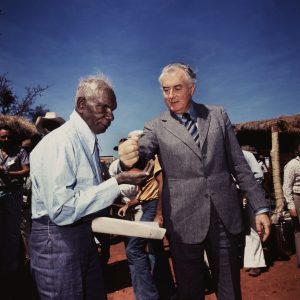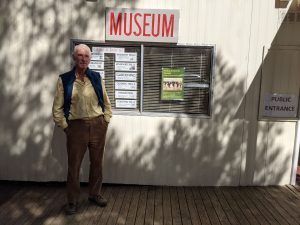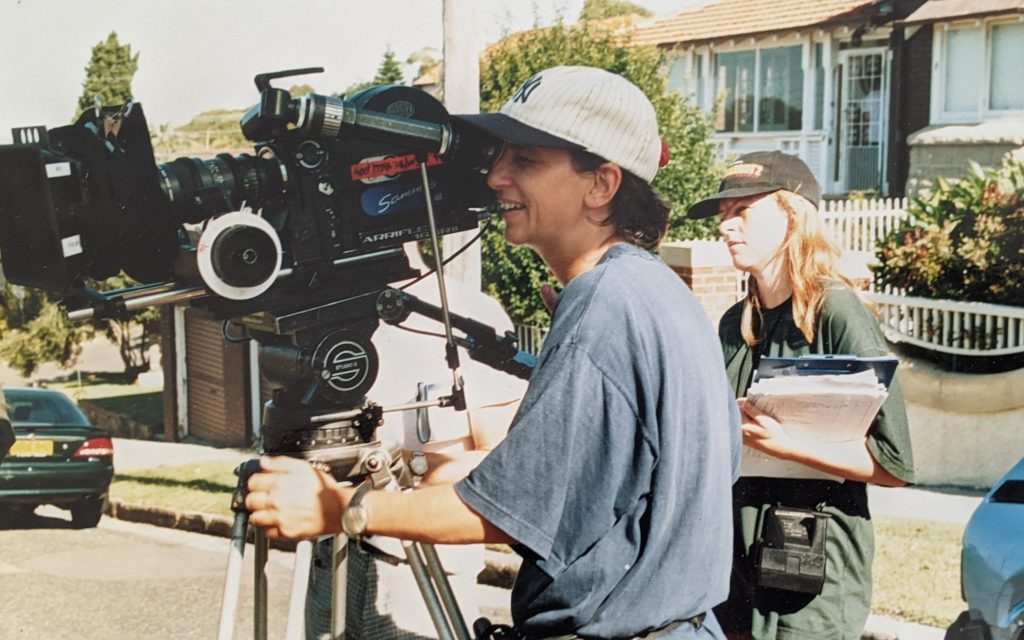The downfall of a president
 An analysis of investigative reporters Bob Woodward and Carl Bernstein’s book
An analysis of investigative reporters Bob Woodward and Carl Bernstein’s book
All the President’s Men. By FELICITY O’FLYNN
The President's Men
• Alfred C. Baldwin III Security guard, CRP
• Alexander P. Butterfield Deputy Assistant to the President, aide to Haldeman
• John J. Caulfield Staff aide to John Enrichment
• Dwight L. Chapin Deputy Assistant to the President, appointments secretary
• Ken W. Clawson Deputy Director of Communications for the White House
• Charles W. Colson Chief Counsel for the President
• Kenneth H. Dahlberg Deputy Director of communications, the White House
• John W. Dean III White House Counsel
• John D. Ehrlichman Counsel and Assistant to the President for Domestic Affairs
• L. Patrick Gray III Acting Director of the Federal Bureau of Investigation
• H.R. Haldeman White House Chief of Staff
• E. Howard Hunt, Jr. President's Special Investigations Unit
• Herbert W. Kalmbach Deputy Finance Chairman CRP, personal attorney to the president
• Henry A. Kissinger National Security Advisor
• Richard G. Kleindienst, Attorney General
• Egil Krogh, Jr. Head of the President's Special Investigations Unit
• Frederick C. La Rue Deputy Director CRP, aide to John Mitchell
• G. Gordon Liddy Finance counsel, CRP
• Clark MacGregor Campaign Director, CRP
• Jeb Stuart Magruder Deputy Directory CRP, former Haledmen aide, former Deputy
Director of Communications for the White House
• Robert C. Mardian CRP political coordinator
• John N. Mitchell Campaign Directory CRP, former attorney general
• Gerald Warren White House Press Secretary
• David R. Young Special assistant at the National Security Council
• Ronald L. Ziegler White House Press Secretary
• Robert C. Odle, Jr. Director of Administration and Personnel, CRP
• Kenneth W. Parkinson CRP counsel
• Herbert L. Porter CRP organizer and former White House aide
• Donald H. Segretti, Political operative for CRP
• Hugh W. Sloan, Jr. Tresaurer, CRP; Former aide to Haldeman
• Maurice H. Stans CRP finance chairman
• Gordon C. Strachan Staff assistant to Haldeman
• Herbert G. Klein Scheduling Director CRP, former aide to Haldeman
• Powell Moore Deputy Press Director, CRP
• Kenneth Rietz Youth Director, CRP
• DeVan L. Shumway Director of Public Affairs, CRP, Former white hours press aide
The Burglars
• Bernard L. Barker
• Virgilio R. Gonzalez
• Eugenio R. Martinez
• James W. McCord, Jr.
• Frank A. Sturgis
All the President’s Men was written and published in 1974 by Bob Woodward and Carl Bernstein (pictured at the time), as a third person narration of their investigation into the burglary at the US National Democratic headquarters at the Watergate complex, and the subsequent cover-up which was even traced to then President Nixon himself. When it was published by Simon and Schuster, it became one of the fastest selling hardcover books in American publishing history, and was the New York Times number one bestseller. Their book also won the newspaper Woodward and Bernstein wrote for, The Washington Post, a Pulitzer Prize.
The third person narration, as well as making this extraordinary book read like a crime-thriller, rather than a standard work of non-fiction, explores the investigation that both Woodward and Bernstein did, as well as their feelings and thoughts whilst they were working on the story. All the President’s Men is the background and details of what the men went through to write the numerous stories for their newspaper during their long and intensive investigations.
The 1970s in the USA were a volatile time; the cold war carried on, the Vietnam War had left the people disillusioned with politicians, and society appeared to be increasingly paranoid. The dreams of the 60s were far behind, and a culture of fear was taking over.
The story started when Woodward was assigned to report on a break-in at the Watergate Complex, by his editor Harry Rosenfeld. Five men had been arrested carrying electronic gear and photographic equipment. However, once he had done some background checks and attended the court hearing for the five men arrested, Woodward quickly discovered that there were ties to the CIA and that the incident appeared highly suspicious. Bernstein had also started working on the story, being one of the political writers for the paper. They started working together, occasionally having to fight their editors to be allowed to continue.
What they found was a conspiracy within the Republican Party to infiltrate and spy on the Democratic Party. A trail of money and personal ties led them from the five men who were arrested for burglary at Watergate to some of the top men working at and for the White House. Money which was donated to the Committee to Re-elect the President, or the CRP, was being diverted through a number of bank accounts and companies. This was then used to pay for espionage and clandestine activities.
It was also revealed that White House itself was being bugged, with the knowledge of President Nixon himself. A number of these tapes had damning evidence about goings-on in the White House, and were to be used as evidence, but some contained suspicious and long erasures.
The resignation of Nixon is often at least partially credited to the work of Woodward and Bernstein, but Bernstein still says “To say that the press brought down Nixon, that's horseshit,” he says. “The press always plays a role, whether by being passive or by being aggressive, but it's a mistake to overemphasize the media's coverage.” (Woodward Bernstein? in Feldstein 2004.)
How exactly Woodward and Bernstein conducted their investigation and got their information where few others were even bothering is an example of investigative journalism that is still held to this day up as an exemplar of how it should be done. “By tenacious tugging at the loose ends of the Watergate tangle, they helped unravel the whole sorry web.” (Gaines 2003). They began with the basics; calling in contacts, ringing people who worked in the courts and police contacts, following the threads that didn’t add up.
From there it was a great deal of paper chasing; a comment from a contact of Bernstein’s who had once worked in Hunt’s office led to hours sifting through all the thousands of request slips in the Library of Congress. This is indicative of the intensity that Woodward and Bernstein exhibited during their investigation. Bernstein for example sat all day outside the office of Martin Dardis, head investigator for Dade County District Attorney, in the hope of seeing subpoenaed documents. He eventually got to see the documents, and that led them even further through their questions.
The most notorious they got information was through the use of Woodward’s contact Deep Throat clumsy sentence. Deep Throat, announced as Deputy Director of the FBI Mark Felt in 2005, has become cliché in the journalistic world. The clandestine way in which Felt monitored Woodward’s home in order to make contact with him is both impressive and disturbing; Woodward never knew how Deep Throat kept track of his paper and balcony, through which they communicated.
Although Deep Throat was able to give them leads and hints, saying things like “Check every lead,” and “Just follow the money,” (Bernstein and Woodward, 1974, p132) and although he would confirm their information, he did not give them new information, nor was he ever quoted in their stories. Working only in deep background was a difficulty for their sense of justice and fairness. Woodward and Bernstein both admitted that they “had gone through periods of apprehension about whether the foundation of their reporting—largely invisible to the reader—was strong enough to support the visible implications.” (Hentoff 1974).
One ethical dilemma explored in this book is how much right does a reporter have to do what Woodward and Bernstein did, simply because they are a reporter. They considered the ethics and legalities of their actions, but it was not as important as getting a good story. “They themselves were not interested in the ethics of what had been done- they were not looking to outline sin or inequity, but simply followed those lines of inquiry that revealed a deeper and darker secret…Ethical concerns are not lacking, but the pressure of a competitive press is clearly a more realistic guarantee of fair coverage.” (Gaines 2003)
When using a contact in the telephone company to get records of conversations, Bernstein felt uncomfortable; “It was a problem he had never resolved in his mind. Why, as a reporter, was he entitled to have access to personal and financial records when such disclosure would outrage him if he were subjected to a similar inquiry by investigators?” (Berstein &Woodward, p 12). Indeed, in the USA “The Reporters' Committee for Freedom of the Press has rightly objected to telephone companies giving government investigators access to journalists' telephone records. To what extent—in this and other matters—does “the people's right to know” entitle a reporter to invade other people's privacy in this way?” (Hentoff 1974) So occasionally Woodward and Bernstein acted unethically in order to surmount the obstacles in their way.
Woodward and Bernstein approached members of the Grand Jury, who were themselves bound not to reveal any information about the case they were sitting before, or to talk to reporters. They checked with their own newspaper’s lawyers, and decided that to get information was not illegal, even though for the jurors to part with it was. So while they would be in the clear, they knowingly put those they approached in a compromised position (and the way they got hold of the names of jurors was also morally questionable). Woodward and Bernstein were excused of misconduct, but only because the judge could find that there was no evidence that any information had been disclosed. But it is clear from this that if they had been successful in getting a jury member to talk, they could have been found to be in contempt.
A further ethical dilemma they encountered regarded the pressure of daily reporting. All the President’s Men is only a summation of all that happened, but they were writing stories all the time for the daily publication, and that meant they had to publish sometimes before they knew for certain the validity of their claims. Indeed, the first story that was written on the Watergate break-in was in many ways lacking, and it is only at the culmination of events that everything is known. When they published the story on Mitchell, they hesitated before letting their editor go with it. They knew Bradlee’s philosophy “a daily paper can’t wait for the definitive account of events,”(Woodward & Bernstein 1974, p102) but they also knew the implications of what would happen if they had got it wrong “John Mitchell was not someone to trifle with.” Time pressures were constantly forcing them to publish, but it also suggests a certainty of their findings which is commendable.
It did lead to issues though: Woodward and Bernstein came under fire from White House officials, and their editors, for publishing stories without what appeared to be a sufficiently firm basis of evidence. For example, they published a story that Haldemen had been identified before a grand jury by Hugh Sloan as one of the men in charge of the fund which paid for Watergate. This was unequivocally denied by Sloan (p 183), and severely damaged the credibility of Woodward and Bernstein, as well as making them even more paranoid about whether they were being set up, and just how reliable Deep Throat really was. Bradlee recalled that it was the lowest moment in Watergate. (Bernstein & Woodward 1974)
Using anonymous sources also is treacherous for a reporter, because the motivation of the source is not apparent to the reader, or even, necessarily, to the journalists involved. They often had to consider the fact that what they were printing, particularly when trials were taking place, might in fact be just providing the guilty with ammunition or a defence they could later use. Bernstien and The Washington Post editors never knew for example who Deep Throat was, and as a man who it turns out was passed over for the position of Director of the FBI, did he had a grudge of his own that he was playing out.
They also once blew a source who was feeding them information from the FBI, even though they always promised their sources total anonymity, understanding the pressures most of them were under, and the occasional danger. While they were not proud of their actions, and justified it to themselves, “they had endangered the agents career, betrayed his trust and risked their credibility with other sources.” (Hentoff 1974). This is one of the clearer examples of the pressure and paranoia they were under, and the risks they put their sources in.
Woodward and Bernstein occasionally used trickery to get interviews and information, even though they always announced themselves as reporters for the Washington Post, and this was something that their editor frequently asked when reading their notes. When Woodward was not able to get a hotel to give him the room number of John Mitchell’s wife, from whom he wanted an interview, he used a pay phone and insinuated that it was an emergency, without actually stating so. At another point, Bernstein implied that he was connected with the FBI in order to gain the confidence, or possibly frighten a woman into giving evidence. Although these tactics were born of frustration at their lack of success, it must be said that they were not honourable moves.
Similarly, in order to get the names of the grand jurors, Woodward convinced a secretary to let him look at the list, although he was banned from taking notes. Woodward simply sneaked off to the bathroom every few minutes to write down what he had just read. This may have served him, but should he have been caught, he would most certainly have gotten himself and the clerk in a great deal of trouble.
Yet they kept themselves honest; they never paid for their interviews, even when it meant they had to pass up exclusives or invaluable leads. When the story on Alfred Baldwin broke, a key figure in Watergate, Baldwin’s lawyer offered to sell Woodward the story for around $5,000 dollars. (Bernstein & Woodward 1974, p109) Woodward declined, and the story was broken by another paper a few weeks later, for free. Baldwin’s interview made a lot of speculation real, and hurt the egos of Woodward and Bernstein and their editor Bradlee.
The legacy of All the President’s Men is what impact journalism can have on the world. After the book was published, enrolment in journalism schools quadrupled, and even now when there is a political scandal, people refer to it as a something-gate: Ute-Gate, Iguana-Gate etc. But what All the President’s Men showed is a determination and dogged commitment to be accurate, fair and above all to get to the truth that still inspires people today.
Bibliography
1. Barrett, Laurence I., 1974, Woodward & Bernstein . . . The dark side of competition, Columbia Journalism Review; Jul/Aug1974, Vol. 13 Issue 2, p14-15, 2p
2. Bernstien, C & Woodward, B. 1974. All the President’s Men. Simon and Schuster. USA.
3. Bradlee, Ben. 2005 Deep Throat Revealed: Ben Bradlee, the Washington Post, retrieved from http://www.washingtonpost.com/wp-dyn/content/discussion/2005/06/01/DI2005060101457.html
4. Feldstein, Mark. 2004. Watergate Revisited. American Journalism Review, August September. Retrieved from http://www.ajr.org/article.asp?id=3735
5. Gaines, William, 2003, Untangling the Web of Watergate. Smithsonian; Dec2003, Vol. 34 Issue 9, p116-121, 5p,
6. Hale, Don. 2003. Woodward and Bernstein's Watergate archive acquired by The University of Texas at Austin. Retrieved from http://www.utexas.edu/news/2003/04/07/nr_watergate/
7. Hentoff, Nat. 1974. Woodward, Bernstein and 'All the President's Men’. Columbia Journalism Review; Jul/Aug Vol. 13 Issue 2, p10-13, 4p.
8. Levine, Murray . 1992, Investigative reporting as a research method: An analysis of Bernstein and Woodward's All the President's Men.
9. Maddox, Bronwen 2004, Shades of grey in White House, The Australian, APR 21. Retreived from http://ezproxy.canberra.edu.au/login?url=http://search.ebscohost.com/login.aspx?direct=true&db=nfh&AN=200404211010276718&site=ehost-live
10. NORRIS MICHELE, 2005, Importance of the source known as Deep Throat. All Things Considered, National Public Radio; 05/31/2005, retrieved from http://ezproxy.canberra.edu.au/login?url=http://search.ebscohost.com/login.aspx?direct=true&db=nfh&AN=6XN200505312102&site=ehost-live.
11. NORRIS MICHELE, 2005, Analysis: Recount of Bob Woodward's relationship with Mark Felt. All Things Considered, National Public Radio. Retrieved from http://ezproxy.canberra.edu.au/login?url=http://search.ebscohost.com/login.aspx?direct=true&db=nfh&AN=6XN200506022106&site=ehost-live
12. http://www.heroism.org/class/1970/wood.html
13. O'Hare, Joseph A. 1974, Untangling the Web of Watergate. America; 6/15/1974, Vol. 130 Issue 23, p477-477, 1p
14. Pitt, David, 2010, Strange Days Indeed: The 1970s, the Golden Age of Paranoia. Booklist; 2/1/2010, Vol. 106 Issue 11, p16.
15. Porteus, Liza. 2005. Current Press Ethics Unlikely to Enable Second 'Watergate'. Fox News.com. Retrieved from Fox.news.com/story/ 0,2933,160755,00.html
16. Reeves, Richard. 1999. Woodward Bernstein. Supplement Centennial, Vol. 132 Issue 44, p12, 1p.
17. Schacter Daniel L. 1995 Memory Distortion: How Minds, Brains, and Societies Reconstruct the Past. First Harvard Univeristy Press, USA
18. Weinberg, Steve, 2007, Library archives provide insider's look at private lives of Watergate exposé team, IRE Journal; Mar/Apr2007, Vol. 30 Issue 2, p6-6, 1p





Recent Comments
0
Post Comment